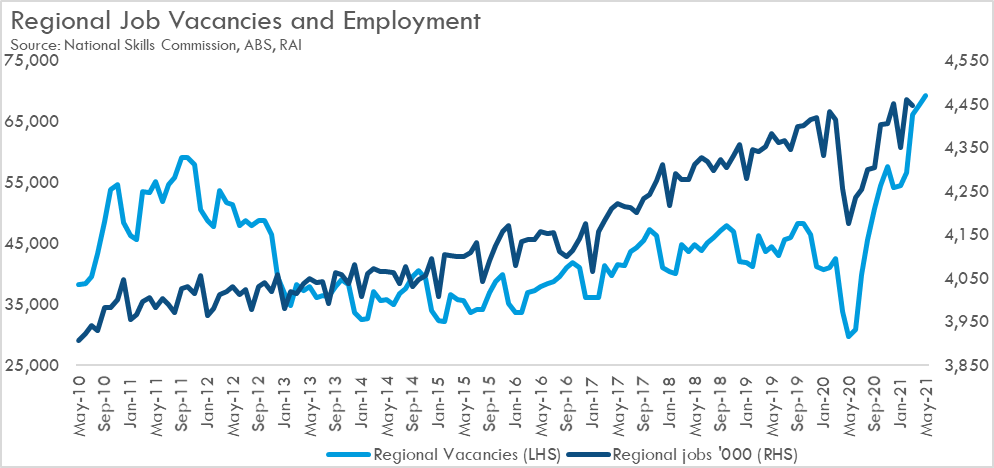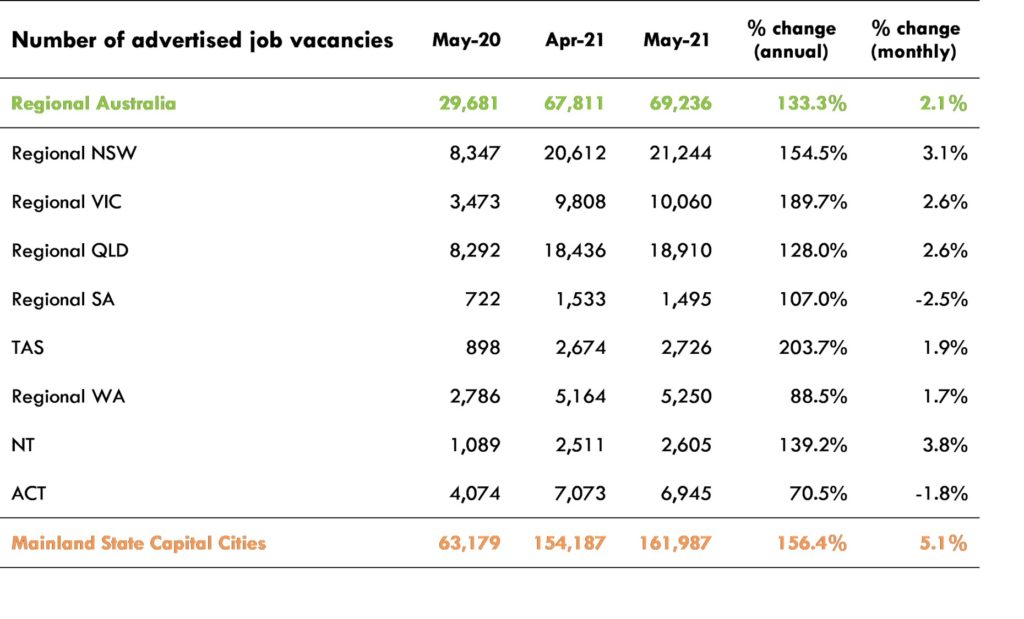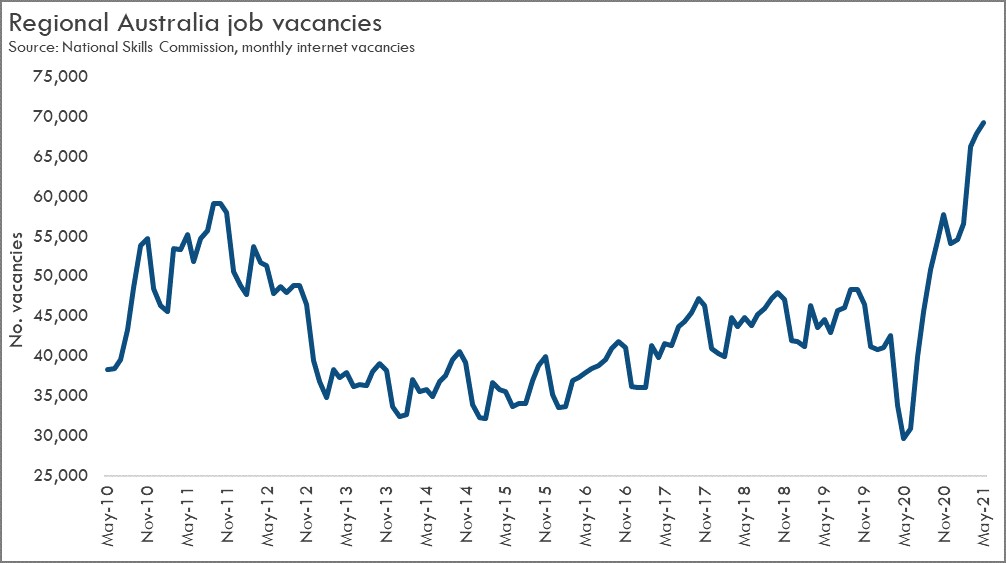In May 2021 there were 69,300 job vacancies across regional Australia, an increase of 2 per cent on the number of vacancies in the previous month and a new record high.
Regional economies have rebounded strongly after the height of the pandemic – just about recouping the momentum that had existed prior to the onset of the pandemic.
And this is important to remember – there was actually quite some momentum in the regional Australian labour market prior to the onset of the pandemic. Vacancies during the period 2016-2019 were growing at an average annual clip of around 6 per cent (the fastest since the mining construction boom). The actual number of people employed in regional areas in the years immediately preceding the pandemic was similarly growing at around 2 per cent per annum, a pace not seen since mining construction boom times.
What is becoming increasingly apparent about the regional Australian labour market – in this long tail end of the pandemic – is that it is now running into supply constraints. In particular – while vacancies keep growing strongly, employment looks to have hit something of a ceiling. In these early months of 2021 vacancies are still recording monthly growth in the order of 2-3 per cent, whereas for employment, growth has just about petered out.
With vacancy growth far outpacing employment growth, we are probably seeing increasing frustration with filling existing jobs as much as job creation. The record vacancies are more likely reflecting the regional implications of the closed international borders. In particular, it is likely that regional employers who aren’t finding workers through the usual channels are turning to the internet to advertise more widely thereby driving these monthly vacancies to record levels.

The five regions with the biggest jumps in vacancies between April and May 2021 were:
- Ballarat and Central Highlands with 7% more vacancies in May 2021 (1,063) than in April 2021 (993)
- Blue Mountains, Bathurst and Central West NSW up by 7% (1,996 compared to 1,847)
- Geelong and Surf Coast up by 6% (2,472 compared to 2,340)
- Far North Queensland up by 5% (5,380 compared with 5,140)
- Darwin up by 5% (1,821 compared with 1,742)
The significant annual increases reflect the very low base of vacancies during the height of pandemic-related restrictions. The top five regions with the biggest increases over the 12 months to May 2021 are:
- Launceston and Northeast Tasmania up by 243%
- Ballarat and Central Highlands in Victoria up by 227%
- Sunshine Coast up by 218%
- North West Tasmania up by 216%
- Geelong and Surf Coast up by 203%


SOURCES The Internet Vacancy Index is updated monthly by the Department of Education Skills, Employment and Business (lmip.gov.au/default.aspx?LMIP/GainInsights/VacancyReport). The RAI has an interactive Regional Job Vacancy map of the data showing vacancies in 37 regions across Australia (Regional Jobs Vacancy Map).